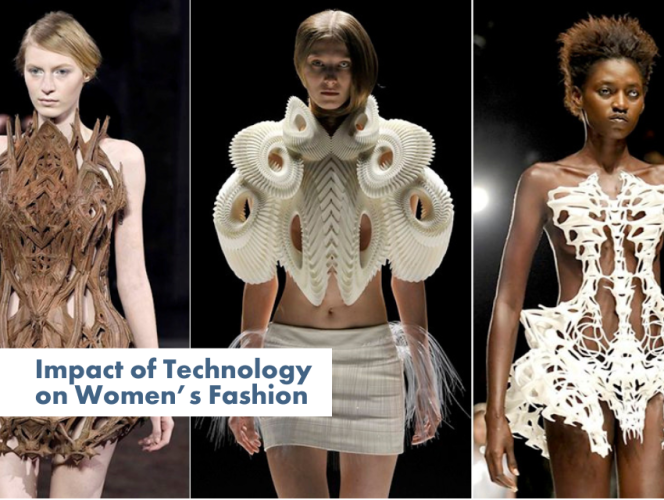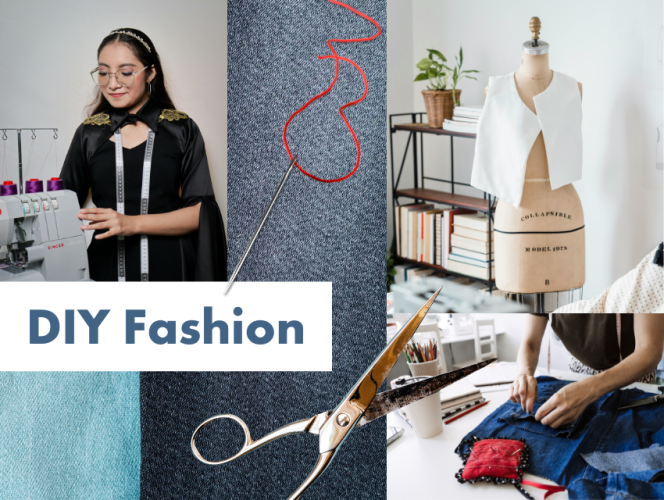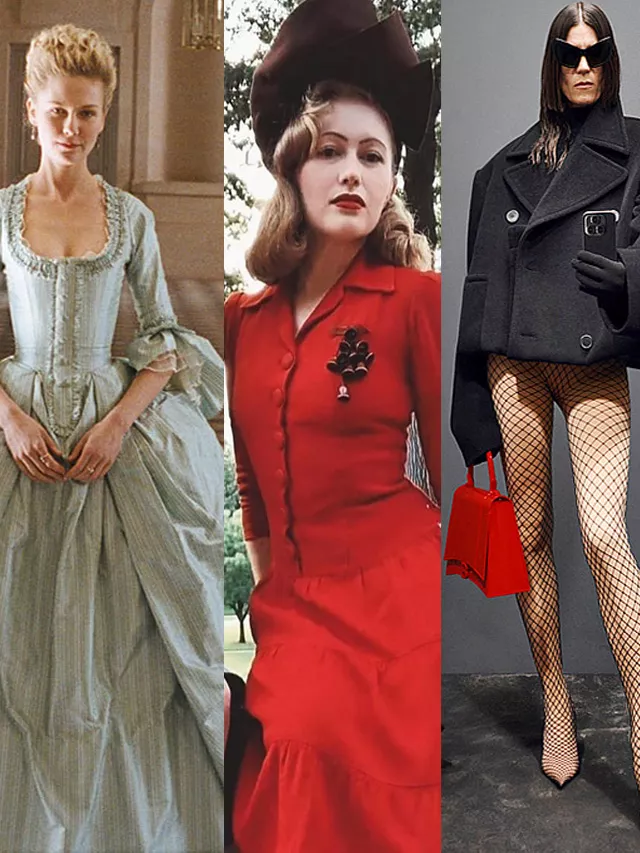Last Updated on September 9, 2025
- Tracing the Threads: The Evolution of Women's Fashion Through History
- Defining Decades: Iconic Women's Fashion Trends That Shaped History
- Pioneers of the Catwalk: Influential Designers and Brands in Women's Fashion
- Global Tapestry: The Diversity of Women's Fashion Across Cultures
- Dress for Progress: Fashion's Role in the Feminist Movements
- Green Threads: The Rise of Sustainable Fashion in the Women's Wardrobe
- Cutting-Edge Couture: The Impact of Technology on Women's Fashion
- Tomorrow’s Trends: Predicting the Future of Women's Fashion
- Style Icons and Fashion Sanctuaries: Influential Figures and Must-Visit Museums
- Craft Your Style: The Art of DIY Women's Fashion
- Chic
- Stylish
- Trendsetting
- Fashion-forward
- Glamorous
- Elegant
- Sophisticated
- Sartorial
- Modish
- Fashionista
Tracing the Threads: The Evolution of Women’s Fashion Through History
Historical Milestones in Women’s Fashion

- Ancient Mesopotamia: Women wore long ankle-length dresses made from wool and calfskin.
- Middle Ages: Women wore floor-length or ankle-length dresses with long sleeves made from natural fibers like wool, silk, and hemp.
- 1784 in Fashion: Hoop skirts were popular.
- Early 1800s: Silhouettes became slimmer.
- 1830s in Fashion: Headdresses became more extravagant.
- 1860s in Fashion: Ballgown became more popular.
- 1920s in Fashion: Flapper dresses became popular, which were short, loose-fitting, and covered in sequins. Women also wore cloche hats and bobbed their hair.
- 1930s in Fashion: Bias-cut dresses became popular, which were form-fitting and accentuated curves. Women also wore all-white outfits, which were seen as a symbol of purity.
- 1940s in Fashion: Clothing became more practical and utilitarian. The U.S. restricted certain fabrics, banned cuffs and hoods, and limited the circumference of women’s skirts.
- 1950s in fashion: The feminine silhouette became popular, with full skirts and fitted tops.
- 1960s in fashion: The mini skirt and shift dresses became popular. Jackie Kennedy introduced leopard prints to the world.
- 1970s in fashion: Pants became popular, and icons like Joni Mitchell and Cher led the country in fringe and natural hair.
- 1980s in fashion: Neon colors, designer underwear, casual and exercise clothing, and suit jackets became popular.
- 2000s in fashion: Boho clothing, asymmetrical tops and skirts, and maxi skirts became popular.
- 2010s in fashion: Jeggings, athleisure, and street style became popular.
Key Influences on the Evolution of Women’s Attire

- Cultural Exchanges: Interaction between different civilizations introduced new fabrics and styles into women’s wardrobes.
- Technological Advancements: Innovations like the sewing machine and synthetic fabrics transformed how clothes were made and the types of garments possible.
- Economic Shifts: Economic booms and depressions influenced the affordability and accessibility of certain styles and materials in women’s fashion.
- Social Movements: Women’s rights movements led to more practical and less restrictive clothing, reflecting growing demands for equality and freedom.
- War and Militarism: Wars necessitated practical attire for women taking on roles traditionally held by men, leading to simpler and more utilitarian clothing.
- Art and Media: Art movements and later media such as film, television, and magazines spread new fashion ideas and ideals rapidly across societies.
- Famous Fashion Designers: Iconic designers like Coco Chanel and Christian Dior shaped significant trends and shifts in women’s fashion norms.
- Globalization: The global spread of fashion trends accelerated by travel and the internet blended international styles and influences more than ever before.
- Environmental and Ethical Awareness: Growing awareness of sustainability issues led to an increased interest in eco-friendly fabrics and ethical production processes.
- Technological Integration: The digital age and advances in technology have introduced wearable technology and digital fashion, pushing the boundaries of traditional attire.
Defining Decades: Iconic Women’s Fashion Trends That Shaped History

- The Chiton (Ancient Greece): This versatile garment, wrapped and pinned in various styles, was foundational in ancient Greek clothing, emphasizing grace and simplicity.
- The Corset (16th to early 20th Century): Central to shaping women’s silhouettes for centuries, the corset cinched the waist and highlighted an hourglass figure.
- The Crinoline (Mid-19th Century): A large, cage-like structure worn under skirts, the crinoline allowed dresses to expand dramatically in width.
- The Flapper Dress (1920s): Symbolic of women’s liberation, this trend included shorter hemlines and dropped waists, defying previous norms of femininity.
- Christian Dior’s New Look (1947): Post-war luxury and femininity were epitomized by cinched waists and full skirts, redefining women’s fashion.
- The Mini Skirt (1960s): Popularized by Mary Quant, the mini skirt became a symbol of youthful rebellion and a fixture of mod fashion.
- Pantsuits for Women (1960s-1970s): Introduced by designers like Yves Saint Laurent, pantsuits empowered women and became a staple in feminist movements.
- The Power Suit (1980s): Characterized by broad shoulders and sharp tailoring, the power suit was integral to the era’s corporate feminism.
- The Slip Dress (1990s): Popularized by celebrities like Kate Moss, the slip dress defined the minimalist and relaxed fashion of the 90s.
- Athleisure (2010s-Present): Combining comfort and style, athleisure blurs the lines between workout wear and everyday fashion, reflecting a shift towards functional style.
Pioneers of the Catwalk: Influential Designers and Brands in Women’s Fashion

- Coco Chanel — Revolutionized women’s fashion with the introduction of the little black dress and comfortable, chic suits.
- Christian Dior — Introduced the “New Look” in 1947, redefining femininity with cinched waists and voluminous skirts.
- Yves Saint Laurent — Known for popularizing the tuxedo suit for women and ready-to-wear luxury fashion.
Global Tapestry: The Diversity of Women’s Fashion Across Cultures

- Traditional Dress and Modern Interpretations: How traditional garments from various cultures are reinterpreted in contemporary fashion.
- Cultural Symbols in Fashion: Examining the meanings behind specific garments, colors, and patterns used in different cultures.
- Influence of Indigenous Textiles: The impact of indigenous textiles and techniques on global fashion trends.
- Cross-Cultural Exchanges: How trade and globalization have mixed fashion elements across different societies.
- Adaptation to Climate and Geography: How local climates and landscapes influence the practical aspects of traditional dress.
- Role of Ceremonial Attire: The significance of ceremonial and ritualistic garments in cultural practices.
- Fashion as a Means of Identity and Resistance: How fashion serves as both a personal and collective expression of identity and resistance.
- Innovations in Sustainable Fashion: How various cultures are leading the way in sustainable fashion practices.
- Regional Fashion Icons and Designers: Prominent designers and fashion icons from different regions and their contributions to global fashion.
- Future Trends Influenced by Cultural Diversity: Predicting how cultural diversity will continue to shape future fashion trends.
Dress for Progress: Fashion’s Role in the Feminist Movements

- The Symbolism of Dress in Early Feminist Movements: Analyzing how attire like bloomers and rational dress symbolized early feminist aspirations for equality and freedom.
- Flappers and the Roaring Twenties: Exploring how the flapper dress and new feminine aesthetics of the 1920s represented women’s liberation and societal shifts.
- Pantsuits and Professionalism: The significance of the pantsuit in the women’s liberation movement of the 1960s and 1970s as a symbol of professional equality.
- Anti-Fashion and the Punk Influence: How the punk movement’s anti-establishment ethos was expressed through disruptive fashion choices that challenged traditional gender norms.
- The Bra-Burning Myth and Misconceptions: Debunking myths and exploring the real fashion-related protests that shaped feminist discourse.
- Power Dressing in the 1980s: The role of power suits in asserting women’s authority and presence in corporate and political arenas.
- Body Positivity and Inclusivity in Modern Fashion: How contemporary fashion embraces diverse body types and challenges beauty standards.
- Activewear and Empowerment: The rise of activewear as a tool for promoting women’s health, independence, and empowerment.
- Fashionable Activism: The use of fashion as a platform for activism, including slogan tees and fashion-forward protests.
- The Intersection of Fashion and #MeToo: Examining how fashion has been used both to challenge and reinforce narratives around harassment and feminism.
Green Threads: The Rise of Sustainable Fashion in the Women’s Wardrobe

- Environmental Impact of Fashion: Discussing how the fashion industry contributes to pollution and waste, and the importance of shifting towards sustainability to mitigate these effects.
- Innovations in Sustainable Materials: Exploring the development and use of eco-friendly materials such as organic cotton, recycled polyester, and alternative materials like bamboo and hemp.
- Ethical Manufacturing Practices: Examining how sustainable fashion promotes fair labor practices and aims to improve conditions for workers in the fashion industry.
- Consumer Awareness and Behaviors: Analyzing how consumer preferences are shifting towards more sustainable and ethically made products, and how these choices drive industry change.
- Sustainable Fashion Brands: Highlighting leading brands and designers who are pioneers in sustainable fashion, setting trends that others in the industry are beginning to follow.
- Circular Fashion Economy: Discussing concepts like recycling, upcycling, and closed-loop systems that are crucial for reducing waste and extending the lifecycle of garments.
- Regulatory and Policy Frameworks: Looking at how governments and international organizations are supporting sustainable fashion through regulations and initiatives.
- Technological Advances in Fashion: Exploring how new technologies are enabling more sustainable production and supply chain processes.
- Impact of Fast Fashion: Critiquing the fast fashion model for its environmental and social drawbacks, and how slowing down consumption can contribute to sustainability.
- Future Trends in Sustainable Fashion: Speculating on how sustainable practices will evolve and potentially dominate future fashion trends.
Cutting-Edge Couture: The Impact of Technology on Women’s Fashion

- Wearable Technology: Incorporation of smart fabrics and fitness trackers into everyday fashion.
- 3D Printing in Fashion: The use of 3D printing to create intricate designs and customizable clothing.
- Digital and Augmented Reality (AR) Fashion: Enhancements in online shopping experiences through AR and virtual fitting rooms.
- Sustainability and Tech: How technology is being used to promote sustainability in fashion through improved materials and production processes.
- AI in Fashion Design: Artificial intelligence tools that assist in predicting trends and designing new styles.
Tomorrow’s Trends: Predicting the Future of Women’s Fashion

- Technological Innovations: Examining how new technologies like AI, VR, and smart textiles are transforming the fashion industry.
- Sustainability and Ethical Fashion: Exploring the growing emphasis on eco-friendly practices and ethical standards in fashion.
- Shifts in Consumer Behavior: Analyzing changes in consumer demands, such as increased preferences for online shopping and personalized products.
- Influence of Social Media on Fashion Trends: Discussing the impact of platforms like Instagram and TikTok in shaping what’s trendy.
- Diversity and Inclusion in Fashion: Highlighting the push towards more inclusive representation within fashion in terms of body size, race, and gender identity.
Style Icons and Fashion Sanctuaries: Influential Figures and Must-Visit Museums

- Influential Fashion Icons of the 20th Century – Exploring the impact of figures like Coco Chanel and Christian Dior on modern fashion. Coco Chanel, Christian Dior
- The Role of Celebrities in Fashion Trends – Examining how stars like Audrey Hepburn and Marilyn Monroe have inspired fashion. Audrey Hepburn, Marilyn Monroe
- Evolution of Fashion Museums – The development and significance of institutions dedicated to the preservation of fashion history, such as the Metropolitan Museum of Art’s Costume Institute in New York. Costume Institute
- Fashion Weeks Around the World – A look at major fashion capitals and their iconic fashion weeks, including Paris, Milan, and New York. Fashion week
- Revolutionary Designers and Their Legacy – Profiles of transformative designers like Yves Saint Laurent and Vivienne Westwood who have left a lasting mark on the industry. Yves Saint Laurent, Vivienne Westwood
Craft Your Style: The Art of DIY Women’s Fashion

- History of DIY Fashion: Exploring the origins and evolution of DIY in fashion, reflecting personal creativity and individual style.
- Techniques and Tools: A look into various sewing and crafting techniques that empower individuals to create unique garments and accessories.
- Impact of Social Media on DIY Fashion: How platforms like Pinterest, YouTube, and Instagram have become essential resources for sharing DIY fashion ideas and tutorials.
- Sustainable Practices in DIY Fashion: Discussing how DIY fashion contributes to sustainability by repurposing old clothes and reducing waste.
- Popular DIY Fashion Projects: Highlighting common projects like customizing denim, upcycling thrift store finds, and creating homemade jewelry.
Stunning Women’s Fashion Trends and Seasonal Wear: Spring, Summer, Fall, and Winter 2025
Fashion Trends 2025: Exploring This Year’s Top Looks Fashion Trends 2024 Gen Z Fashion Trends…
7 Affordable Weekender Bags for Your Next Road Trip
Weekender bag essentials are a must to consider as summer is already in full swing,…
101 Guide To Accessorizing Any Outfit
When you are trying to make an outfit work as it is, you have a…
Melania Trump Outfit Predictions: What Will She Wear on Inauguration Day?
Melania Trump is no stranger to the spotlight. As a former First Lady of the…
Essential Tips for Boutique Owners to Find Reliable Wholesale Clothing Vendors
You’ve decided to take the big step towards opening your boutique. But now you wonder…
Black Friday Sales 2025: TVs, Laptops, Mobile Fashion & Beauty Deals!
The Black Friday Sales are here, and we love to save money! Black Friday has…
Lisa Joy is a highly respected fashion expert, style strategist, and trend forecaster with over 15 years of experience in the global fashion industry. Known for her keen eye for detail and deep understanding of fashion history, Lisa has worked with top designers, luxury brands, and leading fashion publications to shape style narratives that inspire. Her expertise spans runway trends, personal styling, sustainable fashion, and brand image consulting.
She holds a degree in Fashion Merchandising and has been featured in renowned outlets such as Vogue, Harper’s Bazaar, and Elle, sharing insights on seasonal trends, wardrobe curation, and the art of personal branding through style. Lisa’s work blends creativity with market awareness, making her a sought-after consultant for emerging designers and established brands alike.
Passionate about empowering individuals to express themselves through fashion, Lisa believes style should be both timeless and adaptable. On this blog, she shares expert tips, industry analysis, and fashion-forward inspiration to help readers stay ahead of trends while building a wardrobe that truly reflects their personality.
Follow Lisa Joy for insider advice, styling secrets, and the latest in fashion trends, from streetwear essentials to luxury couture.
- Joy Smithhttps://successiblelife.com/author/lisa-joy-smith-freelance-writer/
- Joy Smithhttps://successiblelife.com/author/lisa-joy-smith-freelance-writer/
- Joy Smithhttps://successiblelife.com/author/lisa-joy-smith-freelance-writer/
- Joy Smithhttps://successiblelife.com/author/lisa-joy-smith-freelance-writer/








